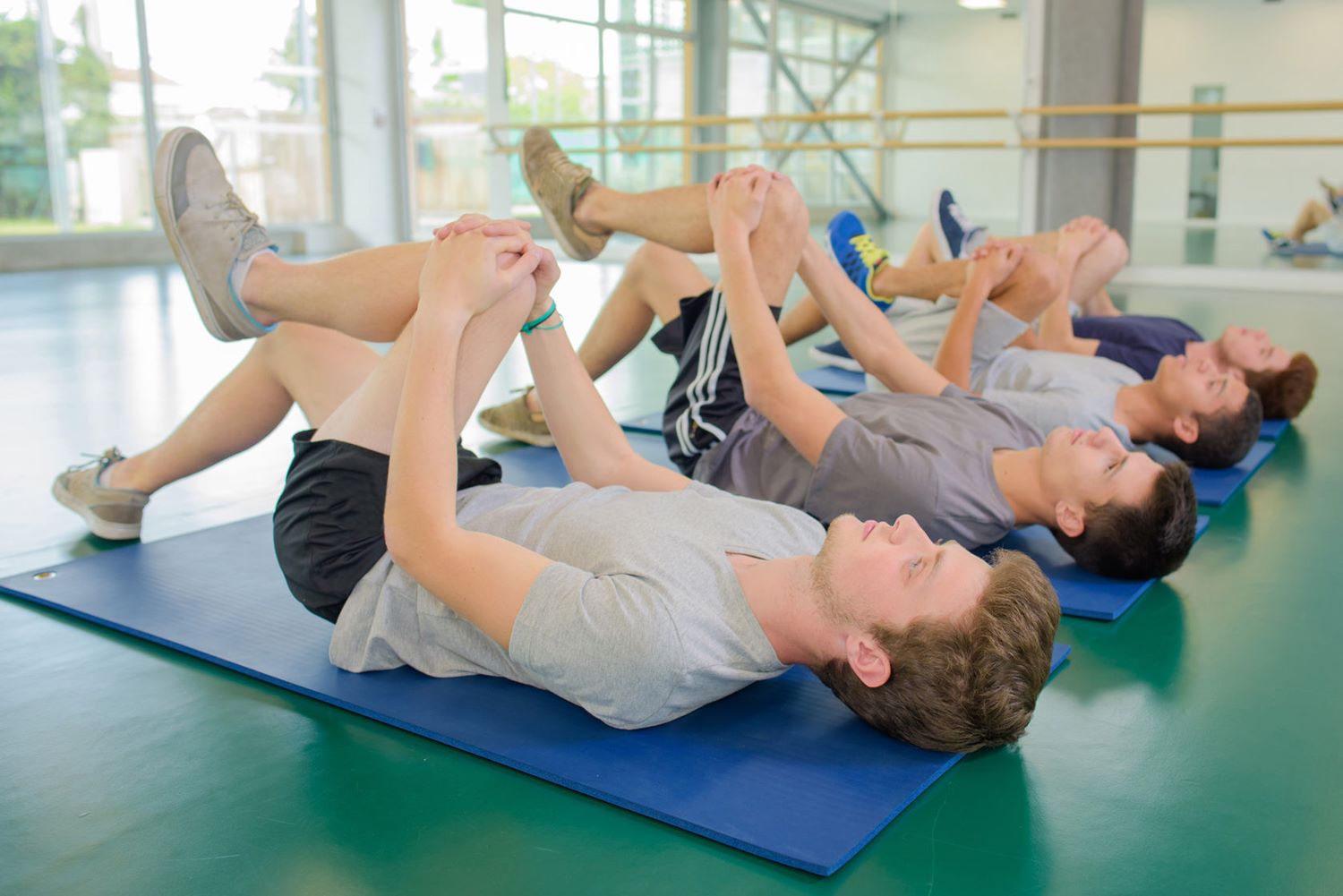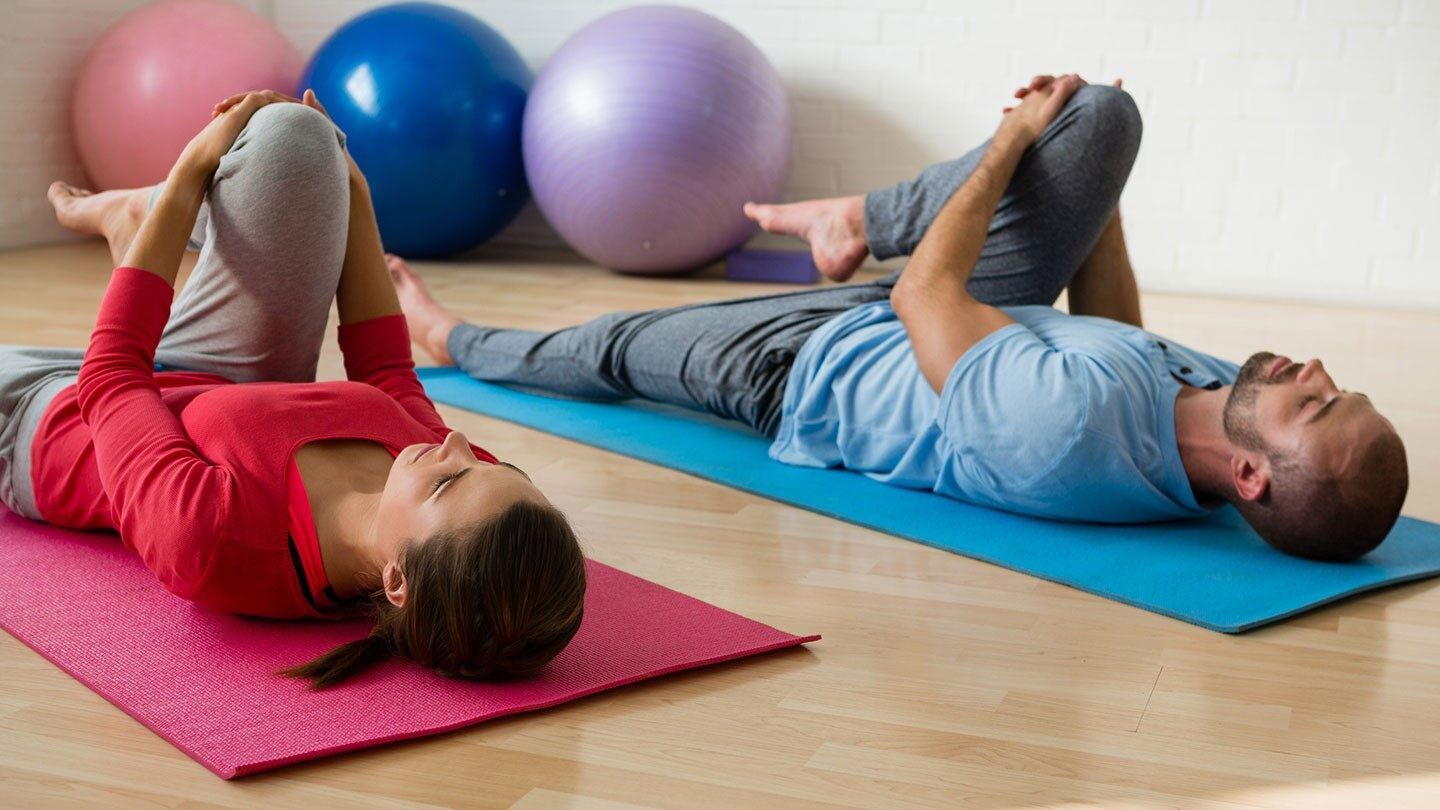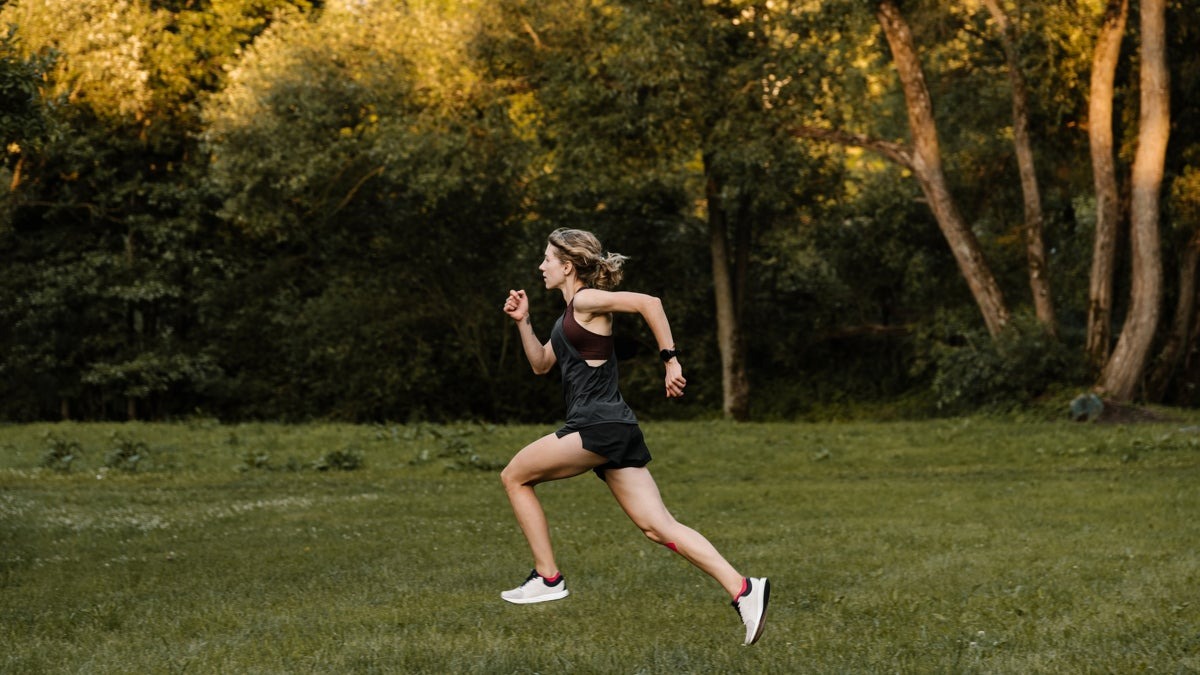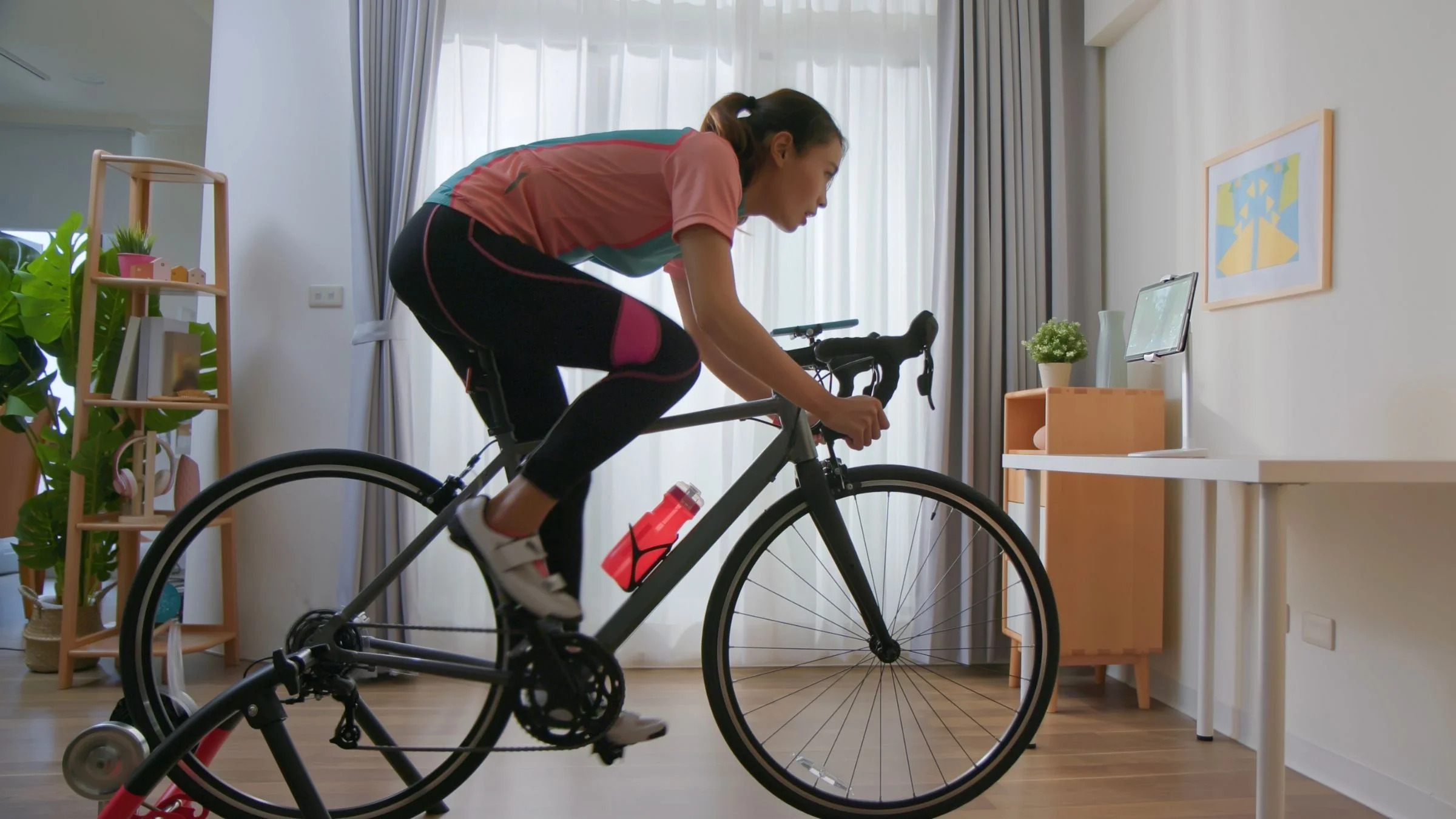Home>Misc>Product Reviews>How To Make A Dog Treadmill
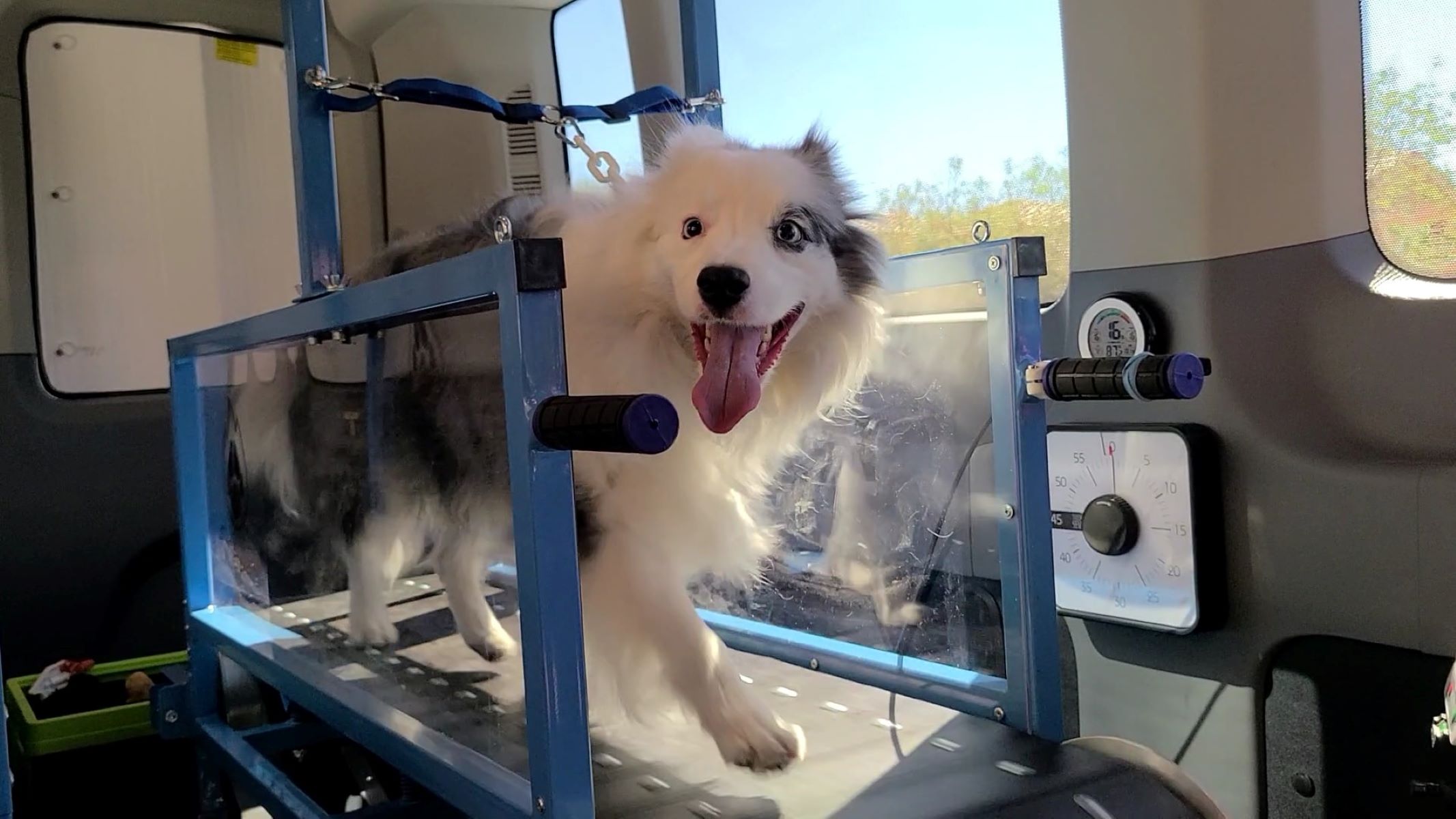

Product Reviews
How To Make A Dog Treadmill
Modified: January 2, 2024
Looking for the best dog treadmill? Read our comprehensive product reviews to find the perfect one for your furry friend. Start exercising your dog today!
Introduction
Welcome to our comprehensive guide on how to make a dog treadmill, tailored specifically for dog owners who want to provide their furry friends with an effective and convenient way to exercise. In today’s busy world, it can be challenging to find the time and space to give your dog the exercise they need. That’s where a dog treadmill comes in handy. With a dog treadmill, you can ensure that your canine companion gets the physical activity they require, regardless of the weather or your own schedule limitations.
A dog treadmill is a specially designed exercise machine that allows dogs to walk or run in a controlled environment. It provides a safe and controlled way for dogs to burn off energy, maintain a healthy weight, and improve cardiovascular health. Whether you have a high-energy working dog, a young and playful pup, a senior dog in need of low-impact exercise, or a dog recovering from an injury, a dog treadmill can be a valuable tool.
Not only does a dog treadmill provide physical benefits, but it also offers mental stimulation and can help alleviate behavioral issues caused by pent-up energy. By incorporating regular exercise on a dog treadmill into your dog’s routine, you can help prevent boredom, destructive behaviors, and excessive barking.
Now that we’ve covered the basics, let’s dive into the benefits of a dog treadmill in more detail and discuss how to choose the right one for your furry friend.
Why Use a Dog Treadmill
As a responsible pet owner, you may wonder why you should invest in a dog treadmill when you can simply take your dog for a walk or allow them to run freely in a park. While traditional outdoor exercise is essential, there are several reasons why incorporating a dog treadmill into your dog’s routine can be beneficial.
Consistency: A dog treadmill allows you to maintain a consistent exercise routine for your dog, regardless of external factors such as weather conditions or your own schedule. It ensures that your dog receives daily exercise, even on days when going outside for a walk may not be feasible.
Injury Prevention: Outdoor exercise carries the risk of injuries from uneven terrain or encounters with other animals. A dog treadmill provides a controlled environment where you can minimize these risks and protect your dog from potential harm.
Customizable Fitness: A dog treadmill allows you to adjust the speed and incline to suit your dog’s fitness level and specific needs. Whether your dog needs a gentle walk or an intense run, a treadmill can accommodate their requirements. This customization is especially helpful for senior dogs or those recovering from injuries.
Energy Release: Many dogs have a surplus of energy that can be difficult to expend solely through walks. A dog treadmill provides a safe and efficient way to release this energy, helping to prevent behavioral problems caused by boredom or pent-up energy.
Time Saving: In today’s fast-paced world, finding the time to walk our dogs can be a challenge. With a dog treadmill, you can exercise your pup indoors, saving you time and allowing you to multitask while ensuring your dog gets the activity they need.
Mental Stimulation: Just like humans, dogs benefit from mental stimulation during exercise. A dog treadmill engages their mind as they focus on walking or running on the moving surface, preventing boredom and providing a mentally enriching activity.
In summary, a dog treadmill offers convenience, injury prevention, customizable fitness options, energy release, time-saving benefits, and mental stimulation. Incorporating a dog treadmill into your dog’s routine can provide a holistic approach to their exercise needs and overall well-being.
Benefits of a Dog Treadmill
Using a dog treadmill offers a range of benefits for both you and your furry friend. Let’s explore some of the advantages that come with incorporating a dog treadmill into your dog’s exercise routine.
Physical Fitness: A dog treadmill provides a controlled and consistent way to keep your dog physically fit. Whether your dog needs to lose weight, improve cardiovascular health, or build muscle tone, the treadmill can help achieve these goals. Regular exercise on the treadmill helps improve endurance, strengthen muscles, and maintain a healthy weight.
Weather Independence: Inclement weather shouldn’t hinder your dog’s exercise routine. A dog treadmill provides a climate-controlled environment where your pup can stay active regardless of rain, snow, extreme heat, or cold temperatures. This ensures your dog gets the exercise they need every day, regardless of the weather conditions outside.
Joint Health: For dogs with joint issues or those recovering from surgery, low-impact exercise is crucial. A dog treadmill allows for controlled movement, reducing the impact on joints while still providing a cardiovascular workout. It’s an excellent option for senior dogs or those with arthritis, as it helps maintain joint mobility without putting excessive strain on their bodies.
Behavioral Improvement: Many behavior issues in dogs stem from a lack of physical and mental stimulation. Regular exercise on the treadmill helps burn off excess energy, reducing issues such as destructive chewing, excessive barking, and hyperactivity. A tired dog is generally a well-behaved dog, and the treadmill can play a vital role in achieving this.
Bonding Time: Using a dog treadmill can also be a bonding experience for you and your furry friend. Unlike walking outdoors, where you may be distracted by other factors, using a treadmill allows you to focus solely on your dog. You can provide motivation, encouragement, and rewards, strengthening the bond between you and your pet.
Versatility: A dog treadmill is not limited to just walking or running exercises. Many models offer adjustable inclines and speeds, allowing you to simulate uphill climbs or interval training. This versatility in workout options can help keep your dog mentally stimulated, prevent workout plateaus, and accommodate different fitness levels.
In summary, the benefits of a dog treadmill include improved physical fitness, weather independence, joint health, behavioral improvement, bonding time, and versatility in workouts. By investing in a dog treadmill, you’re investing in your dog’s overall well-being and quality of life.
Choosing the Right Dog Treadmill
When it comes to selecting a dog treadmill, there are several factors to consider to ensure you choose the right one that meets your dog’s needs. Here are some essential considerations to keep in mind:
Size and Weight Capacity: Take into account your dog’s size and weight when choosing a treadmill. Ensure that the treadmill’s running area is long enough for your dog’s stride length, and that it can safely support your dog’s weight. It’s always better to choose a treadmill with a higher weight capacity to accommodate any future growth or potential weight gain.
Treadmill Design: Look for a treadmill specifically designed for dogs. Dog treadmills usually have a longer running area, low-profile sidewalls, and additional safety features compared to human treadmills. These features are essential for ensuring your dog’s comfort and safety during exercise.
Adjustable Speed and Incline: Opt for a treadmill that allows you to adjust the speed and incline. This feature is especially important if you have multiple dogs with varying fitness levels or if your dog needs rehabilitation exercises or specific training intensities.
Noise Level: Dogs can be sensitive to loud noises, so consider a treadmill that operates quietly. Choose a model with a quiet motor to prevent any potential anxiety or discomfort during your dog’s exercise sessions.
Stability and Durability: Look for a treadmill that is sturdy and well-built to withstand your dog’s movement. Ensure that the treadmill has a stable base and doesn’t wobble while in use. High-quality materials and construction will ensure longevity and prevent any accidents or injuries.
Safety Features: Safety should be a top priority when choosing a dog treadmill. Look for features such as safety stop buttons, emergency shut-off mechanisms, and side rails or barriers to prevent your dog from accidentally stepping off the treadmill during exercise.
User-Friendly Controls: Consider a treadmill with user-friendly controls that are easy to understand and operate. An intuitive control panel will make it easier for you to adjust speed, incline, and program settings according to your dog’s needs.
Warranty and Customer Support: Before making a purchase, check the warranty and customer support provided by the manufacturer. A reliable warranty ensures that any potential issues with the treadmill will be addressed, and good customer support can assist you with any questions or concerns that may arise.
Take your time to research various models, read customer reviews, and consult with professionals if needed. Choosing the right dog treadmill will provide you with a reliable and convenient exercise solution for your beloved pet.
Safety Precautions
While a dog treadmill can be a great tool for exercising your furry friend, it’s important to prioritize safety to prevent any accidents or injuries. Here are some essential safety precautions to keep in mind when using a dog treadmill:
Supervision: Always supervise your dog when they are using the treadmill, especially during the initial stages when they are still getting used to it. This will allow you to intervene if any issues arise and ensure their safety throughout the exercise session.
Introduce Slowly: Take the time to introduce your dog to the treadmill gradually. Start with short and slow sessions to allow them to become familiar with the treadmill’s movement and sensation. Use positive reinforcement and rewards to create a positive association with the treadmill.
Secure Your Dog: Make sure your dog is securely attached to the treadmill using a harness or a specially designed dog treadmill tether. This will prevent them from falling or jumping off the treadmill during the exercise session.
Start with a Flat Surface: Begin your dog’s treadmill workouts on a flat surface with no incline. Once your dog is comfortable and accustomed to using the treadmill, you can gradually increase the incline levels as desired.
Proper Warm-Up and Cool-Down: Just like humans, dogs also benefit from a warm-up and cool-down period. Before starting the treadmill, engage your dog in some light stretching or warm-up exercises. After the workout, allow them to cool down gradually by reducing the speed and offering them water.
Avoid Overexertion: Be mindful of your dog’s physical abilities and fitness level. Avoid pushing them too hard, especially in the early stages of using the treadmill. Monitor their breathing, body language, and overall comfort level during the workout, and adjust the speed and duration accordingly.
Keep Paws Away from Moving Parts: Ensure that your dog’s paws stay clear of any moving parts or gaps on the treadmill. Regularly check the treadmill’s surface for any wear and tear, and clean it thoroughly to remove any debris or objects that could cause harm to your dog’s paws or nails.
Routine Maintenance: Regularly inspect and maintain the treadmill to ensure it is in proper working condition. Lubricate the belt, check the tension, and tighten any loose parts as needed. Refer to the manufacturer’s guidelines for specific maintenance instructions for your dog treadmill model.
Consult with a Veterinarian: If your dog has any pre-existing health conditions or concerns, or if you’re unsure about their ability to use a treadmill, consult with your veterinarian before starting a treadmill exercise routine. They can provide valuable guidance and specific recommendations based on your dog’s individual needs.
By following these safety precautions, you can create a safe and enjoyable treadmill exercise experience for your dog while minimizing the risk of accidents or injuries.
Setting up the Dog Treadmill
Setting up a dog treadmill properly is essential to ensure your pup’s safety and comfort during exercise sessions. Follow these steps to set up your dog treadmill effectively:
Choose an Appropriate Location: Select a suitable area in your home or designated space where you plan to use the dog treadmill. Ensure that there is enough room for your dog to comfortably walk or run on the treadmill without any obstructions.
Prepare the Surface: Place a non-slip mat or rubberized flooring underneath the treadmill to provide stability and prevent it from sliding during use. This will also protect your flooring from any potential damage caused by the treadmill’s movement.
Follow Manufacturer’s Assembly Instructions: Carefully read and follow the manufacturer’s assembly instructions provided with your dog treadmill. Ensure that all the parts are securely attached, and that the treadmill is stable and level before allowing your dog to use it.
Adjust Speed and Incline: Familiarize yourself with the treadmill’s control panel and adjust the desired speed and incline settings. Start with a slow walking pace and gradually increase it as your dog becomes more comfortable and accustomed to using the treadmill.
Introduce Your Dog to the Treadmill: Allow your dog to approach the treadmill while it is turned off. Give them time to explore and sniff the treadmill, using positive reinforcement and praise. This will help them associate the treadmill with positive experiences and reduce any apprehension or fear.
Encourage Your Dog to Step on the Treadmill: Using treats or toys, lure your dog onto the treadmill while it is still off. Reward them for standing on the treadmill and gradually progress to getting them to take a few steps. Repeat this process until your dog is comfortable and willing to step onto the treadmill willingly.
Slowly Start the Treadmill: Once your dog is confidently standing on the treadmill, slowly start the belt at a slow speed. Continue to offer positive reinforcement and rewards to encourage your dog to stay on the moving treadmill.
Monitor Your Dog: Keep a close eye on your dog during the exercise session. Watch for signs of discomfort, fatigue, or anxiety. Adjust the speed or stop the treadmill if necessary. Gradually increase the duration and intensity of the workouts as your dog progresses and becomes more comfortable using the treadmill.
Establish a Routine: Set a regular exercise schedule for your dog’s treadmill workouts. Consistency is key to helping your dog build endurance and reap the benefits of regular exercise. Start with shorter sessions and gradually increase the duration as your dog’s fitness level improves.
By following these steps, you can effectively set up your dog treadmill and ensure a smooth and safe exercise experience for your furry friend.
Training Your Dog to Use the Treadmill
Training your dog to use the treadmill requires patience, positive reinforcement, and a gradual approach. Here are some tips to help you effectively train your dog to use the treadmill:
Step 1: Introduce the Treadmill: Start by allowing your dog to approach and investigate the treadmill while it is turned off. Let them sniff it and become familiar with its presence without any pressure or expectations.
Step 2: Positive Association: Create a positive association with the treadmill by rewarding your dog with treats, praise, or their favorite toy whenever they show interest or approach it willingly. This helps build a positive connection and reduces any hesitation or fear.
Step 3: Get Your Dog Used to the Treadmill: Once your dog is comfortable with the presence of the treadmill, encourage them to step onto it while it is off, using treats or toys to lure them. Reward and praise them for standing on the treadmill, gradually increasing the duration they spend on it.
Step 4: Familiarize Your Dog with the Movement: Start the treadmill at a very slow speed, allowing your dog to observe the movement. Assure them and provide positive reinforcement as they become more comfortable with the motion. Use treats or toys to keep them motivated and focused.
Step 5: Introduce the Walking Exercise: Gradually increase the speed of the treadmill to a slow walking pace while your dog is on it. Walk beside your dog, providing encouragement and rewards for staying on the treadmill. Start with short sessions and gradually increase the duration as your dog becomes more accustomed to the exercise.
Step 6: Adjust Speed and Incline: As your dog gains confidence, gradually increase the speed and incline of the treadmill. Always monitor their comfort level and adjust accordingly. Remember, each dog is different, so progress at a pace that suits your dog’s abilities and comfort.
Step 7: Maintain a Positive Environment: Throughout the training process, maintain a positive and encouraging environment. Use verbal cues and positive reinforcement to guide your dog and reward them for their progress. Make training sessions enjoyable and fun to keep your dog engaged and motivated.
Step 8: Consistency is Key: Consistency is crucial when training your dog to use the treadmill. Establish a regular exercise routine that includes treadmill sessions. This will help your dog develop a habit and become more comfortable and confident with each session.
Remember to be patient and understanding as your dog learns to use the treadmill. Each dog will progress at their own pace, so be mindful of their individual needs and abilities. With time, patience, and positive reinforcement, your dog will learn to use the treadmill comfortably, providing them with an effective and convenient exercise option.
Maintaining and Cleaning the Dog Treadmill
Maintaining and cleaning your dog treadmill regularly is essential to ensure its longevity and optimal performance. Here are some tips to help you properly maintain and clean your dog treadmill:
Read the Manufacturer’s Guidelines: Start by familiarizing yourself with the manufacturer’s guidelines and recommendations for maintaining and cleaning your specific dog treadmill model. These instructions will provide specific details and precautions to follow.
Inspect the Treadmill Regularly: Take the time to visually inspect the treadmill on a regular basis. Check for any signs of wear and tear, loose bolts or screws, frayed cables, or any other potential issues. Address these concerns promptly to prevent any accidents or further damage.
Lubricate the Belt: Check the treadmill’s manual for instructions on lubricating the belt. Over time, the belt may become dry or worn, leading to increased friction and potential damage. Lubricating the belt periodically will help maintain its smooth operation and prevent unnecessary strain on the motor.
Clean the Surface: Regularly clean the treadmill’s surface to remove dirt, hair, and debris. You can use a damp cloth or a vacuum cleaner to remove larger particles. For a deeper clean, refer to the manufacturer’s guidelines for suitable cleaning solutions or recommended methods to clean the treadmill’s surface thoroughly.
Wipe Down Handles and Rails: Use a mild detergent and a cloth to wipe down the handles and rails of the treadmill. This will remove any sweat, oils, or dirt that may accumulate during your dog’s exercise sessions. Keeping these areas clean will help maintain proper hygiene and prevent the buildup of bacteria or odors.
Clean the Motor Housing: Dust and particles can accumulate around the motor housing, affecting its performance. Use a soft cloth or a small brush to carefully dust and clean the motor housing. Avoid using any liquids around the motor area to prevent damage.
Check Safety Features: Regularly test the safety features of the treadmill, such as the emergency shut-off button and safety stop mechanism. Ensure that these features are functioning correctly to provide a safe environment for your dog during exercise sessions.
Keep the Area Around the Treadmill Clear: Make sure there is ample space around the treadmill, allowing for safe and unobstructed movement. Remove any objects, toys, or debris that could interfere with your dog’s exercise or pose a safety hazard.
Follow Maintenance Schedule: Adhere to the maintenance schedule recommended by the manufacturer. This may include tasks such as lubricating the belt, checking the tension, or tightening any loose parts. Regular maintenance will help keep the treadmill in optimal condition and prevent any potential issues.
By following these maintenance and cleaning tips, you can keep your dog treadmill in excellent working condition, ensuring its longevity and providing a clean and safe environment for your furry friend’s exercise routine.
Troubleshooting Common Issues
While dog treadmills are designed to be durable and efficient, occasional issues may arise. Here are some common problems you may encounter with a dog treadmill and how to troubleshoot them:
Issue: Belt Slipping or Sticking: If the treadmill belt slips or sticks during use, it may need to be adjusted. Consult the manufacturer’s manual for specific instructions on how to adjust the belt tension. Follow the guidelines carefully to ensure proper alignment and tension for smooth and consistent movement.
Issue: Unusual Noises: If you notice unusual noises coming from the treadmill, such as squeaking or grinding, it could indicate a problem. Start by checking for any loose parts or screws that need tightening. Inspect the belt for any debris or foreign objects that may be causing friction or noise. If the issue persists, contact the manufacturer for further assistance.
Issue: Console or Control Panel Malfunction: If the console or control panel is unresponsive or not functioning correctly, check the power connection and ensure it is securely plugged in. If the problem continues, try resetting the treadmill by turning it off and then on again. If the issue persists, contact the manufacturer or seek professional assistance.
Issue: Motor Overheating: If the motor starts to overheat, it may be due to excessive use or inadequate airflow. Check if any vents or openings are blocked and ensure proper ventilation around the treadmill. Allow the motor to cool down before using it again. If the issue persists, consult a professional technician for further inspection and maintenance.
Issue: Uneven Running Surface: If you notice that the running surface is uneven or slopes to one side, it may need to be leveled. Check the treadmill’s manual for instructions on how to adjust the incline or level the surface. Align the treadmill properly to ensure a balanced and even surface for your dog to walk or run on.
Issue: Safety Features Not Working: If the safety features, such as the emergency shut-off button or safety stop mechanism, are not functioning correctly, discontinue use of the treadmill until the issue is resolved. Check for any loose connections or damaged parts. Contact the manufacturer for guidance and assistance in repairing or replacing the safety features.
Issue: Dog’s Discomfort or Refusal to Use the Treadmill: If your dog shows discomfort or refuses to use the treadmill, assess their body language and behavior during the exercise sessions. It could indicate that the speed, duration, or intensity of the workout is too much for them. Adjust the settings to suit your dog’s comfort level and gradually increase the intensity over time.
If you encounter any other issues or if the problems persist, refer to the manufacturer’s troubleshooting guide or contact their customer support for further assistance. They will be able to provide specific guidance based on the make and model of your dog treadmill.
Conclusion
In conclusion, a dog treadmill is a valuable tool for providing your furry friend with consistent exercise, regardless of the weather or your own schedule limitations. It offers numerous benefits, including physical fitness, weather independence, joint health, behavioral improvement, bonding time, and versatility in workouts. By incorporating a dog treadmill into your dog’s routine, you can contribute to their overall well-being and enhance their quality of life.
When choosing a dog treadmill, consider factors such as size and weight capacity, treadmill design, adjustability of speed and incline, noise level, stability, and safety features. Take the time to properly set up the treadmill and follow safety precautions to ensure your dog’s safety during exercise sessions.
Training your dog to use the treadmill requires patience, positive reinforcement, and a gradual approach. Start with introducing them to the treadmill, creating a positive association, and slowly increasing their comfort and confidence. Consistency is key in training and establishing a regular exercise routine for your dog.
Maintaining and cleaning the dog treadmill regularly is essential for its longevity and optimal performance. Follow the manufacturer’s guidelines for maintenance tasks such as lubricating the belt, inspecting the treadmill, cleaning the surface, and checking safety features.
If you encounter any issues or problems with the dog treadmill, refer to the manufacturer’s troubleshooting guide or seek professional assistance. Your dog’s safety and comfort should always be a top priority.
With dedication, proper training, and regular maintenance, a dog treadmill can become an essential part of your dog’s exercise routine, ensuring they stay healthy, happy, and engaged. So, why wait? Invest in a dog treadmill today and embark on a journey to a healthier and more active lifestyle for your beloved canine companion.
